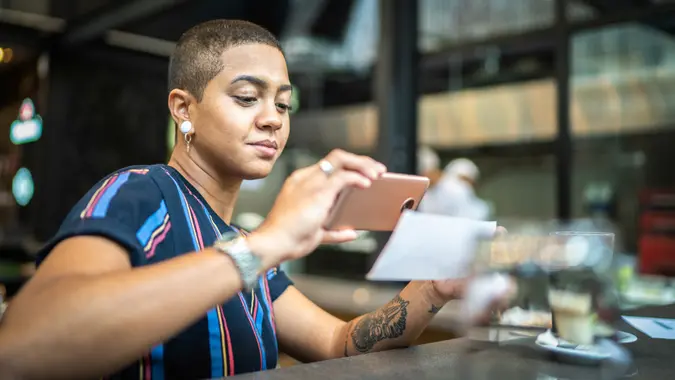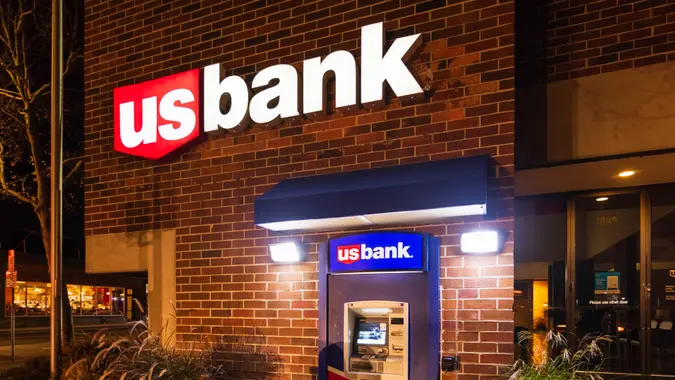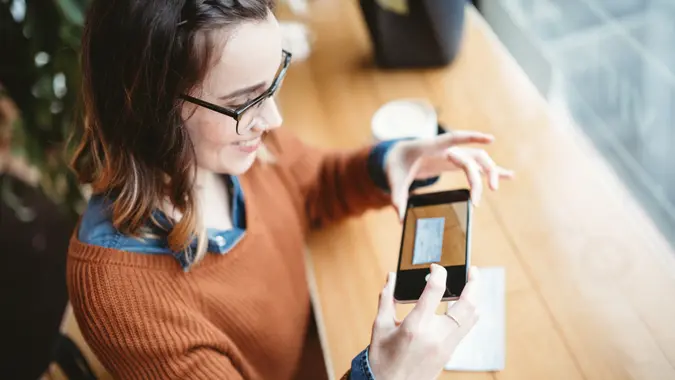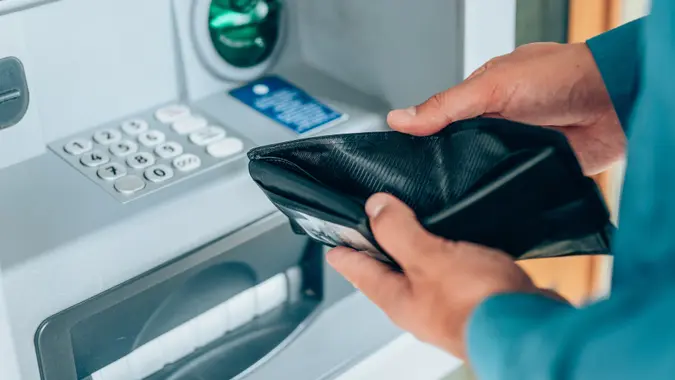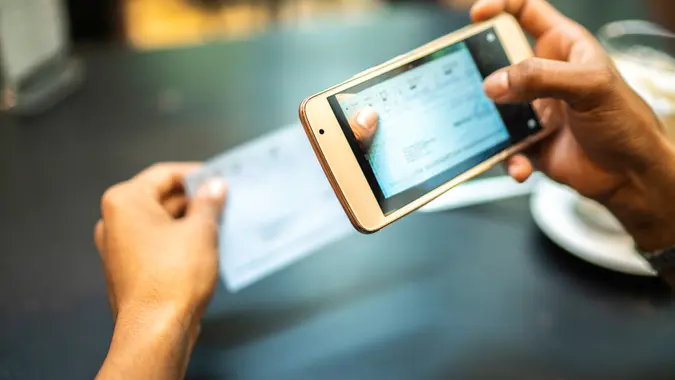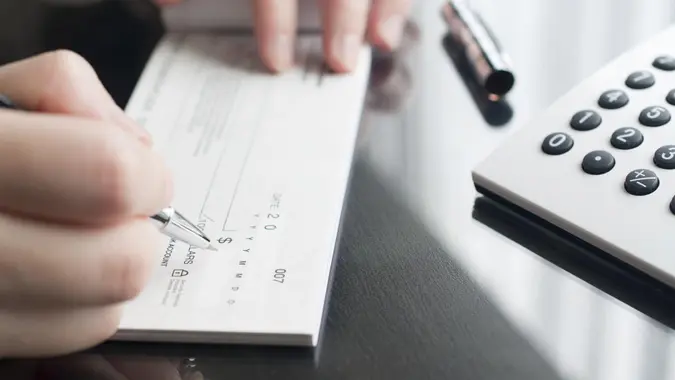Current Balance vs. Available Balance in a Bank Account: What’s the Difference?

Commitment to Our Readers
GOBankingRates' editorial team is committed to bringing you unbiased reviews and information. We use data-driven methodologies to evaluate financial products and services - our reviews and ratings are not influenced by advertisers. You can read more about our editorial guidelines and our products and services review methodology.

20 Years
Helping You Live Richer

Reviewed
by Experts

Trusted by
Millions of Readers
Sometimes the amount you see doesn’t reflect what’s actually available for you to spend.
Understanding the differences between current balance vs. available balance can help you avoid costly overdrafts.
What Is Current Balance?
Your current balance is the amount of money in your account at the moment. It reflects all deposits, withdrawals and purchases the bank has processed. The current balance does not include pending transactions because they have not yet posted to the account.
This can be confusing because you may believe you have more money in the account than is actually there if you forget about those pending transactions.
What Is Available Balance?
The available balance is the amount of money you have for cash withdrawals and purchases. This amount typically includes pending transactions and holds the bank places on deposits you’ve made. It does not include transactions that can take extra time to process, such as pay-at-the-pump gas purchases and restaurant bills with the tip added.
The available balance does not reflect scheduled transactions like automatic payments for bills and checks that you’ve written but have not cleared.
How Do Holds Affect Your Available Balance?
Holds are temporary restrictions banks place on funds in your account, typically to cover pending transactions or verify deposits.
Some common examples of holds that you might experience are:
- Merchant holds: Gas stations and hotels often place a hold on your account to ensure you have enough funds.
- Deposit holds: Banks may hold a portion of your deposit until the funds are verified.
When Does Your Available Balance Update?
The available balance updates immediately for most debit card transactions but may take longer for deposits or ACH transfers. Transactions processed on the weekend or holidays may not update your available balance until the next business day.
Which Balance Should I Use?
The balance you should pay attention to depends on what you’re trying to do.
If you’re trying to decide if you can afford a purchase, look at your available balance.
If you want to see if your bank processed a bill you paid, look at your current balance.
How To Check Your Current and Available Balances
You can check your balances in a few ways:
- Online banking: Login to your bank’s website to see both balances.
- Mobile app: Most banking apps display the current and available balances side by side.
- Bank statement: Monthly bank statements reflect your current balance at the end of the billing cycle.
How To Spot Discrepancies Between Your Balances
If your available balance is lower than expected, ask yourself the following:
- Have you made any recent debit card purchases or ATM withdrawals?
- Do you have holds placed on pending deposits?
- Do you have scheduled payments that haven’t cleared?
How To Avoid Overdrafts
Your account has insufficient funds to cover transactions if the balance falls below zero. The bank may deny charges and return checks with a note that your account doesn’t have enough money to make the payment. Some banks charge a non-sufficient funds fee when this happens. Here are some tips you can use to avoid overdrafts:
- Monitor your account through your mobile app or online banking.
- Keep an eye on scheduled payments and transactions that may not appear in your available balance.
- Maintain a buffer in your account to avoid dipping into negative territory.
- Set up alerts about low balances, large transactions or deposits.
Final Take
When you know the difference between current balance vs. available balance, you have a better understanding of your finances and can avoid costly penalties for overdrawing your account.
If you notice the available balance is too low to cover upcoming withdrawals, you can deposit money before those transactions hit the account. You’ll also be able to swipe your debit card with confidence, knowing you have the money available to cover the transaction at the point of sale.
FAQ
Here are the answers to some commonly asked questions about current balance vs. available balance.- Should I go by current balance or available balance?
- Use your available balance for spending decisions -- it reflects pending transactions and shows you what's immediately accessible.
- How long until current balance becomes available?
- Deposits or holds may take up to 3 business days to clear, depending on the transaction type.
- Can I take money out of my current balance?
- Yes, but to avoid overdrafts, you shouldn't exceed your available balance.
- Why is my available balance more than my current one?
- This can happen if pending deposits are partially available or holds have been released.
- Can I withdraw the current balance or the available balance?
- Check the available balance before making a withdrawal or swiping your card to make a purchase. Since this amount includes pending transactions, it gives you a better idea of how much money you have to spend.
Elizabeth Constantineau contributed to the reporting for this article
Our in-house research team and on-site financial experts work together to create content that’s accurate, impartial, and up to date. We fact-check every single statistic, quote and fact using trusted primary resources to make sure the information we provide is correct. You can learn more about GOBankingRates’ processes and standards in our editorial policy.
- EECU. "Understanding current vs available balance."
- Corporate Finance Institute. "Available Balance."
 Written by
Written by  Edited by
Edited by 



